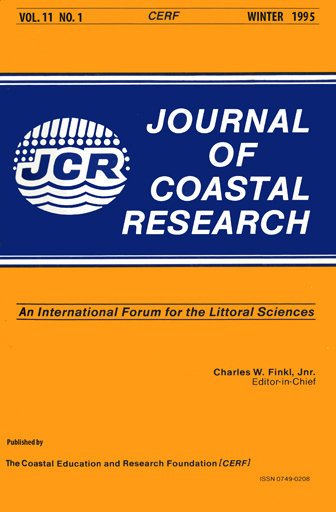Mudbanks of the Southwest Coast of India. II: Wave-Mud Interactions
Keywords:
Energy dissipation, fluid mud, viscosity, wave energyAbstract
In order to explain the various sedimentary characteristics and processes involved in the formation, sustenance and dissipation of monsoonal mudbanks off the southwest coast of India, an in situ examination of wave-mud interactions was carried out. It is concluded that fine sediment in comparatively shallow waters is fluidized by waves and subsequently transported shoreward by the combined action of waves and currents. Due to the convergence of wave energy, fluid mud is deposited at specific nearshore sites resulting in the occurrence of localized mudbanks. As wave action subsides at the end of the monsoon, the nearshore fluid mud slides back offshore due to gravity. Hence the duration of the mudbank depends on the ability of waves and currents in sustaining mud in the fluidized state and in overcoming its downslope offshore movement. A six-stage conceptual model of mudbank evolution is proposed.


